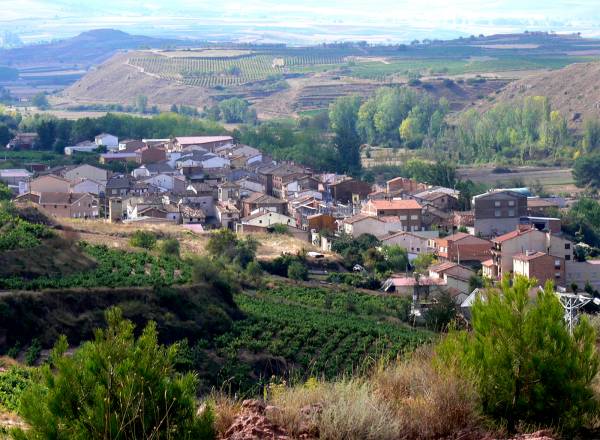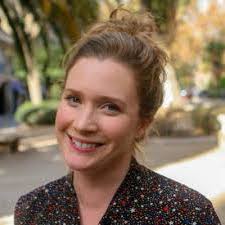“We do not impose discipline: the children impose it on themselves. Rigorous, not rigid. Firm, not harsh. Personalities are sculpted, polished until they shine...We know how to shape the best.” – the Headmaster.
 In this finely written and often subtle literary thriller, debut author Sara Mesa focuses on an elite boarding school in rural northeast Spain. The school, Wybrany College, has been built in a man-made meadow on the road from Cardenas to the now defunct city of Vado. No signs along the road indicate any access to the property, and the school’s website does not provide an exact location for it.
In this finely written and often subtle literary thriller, debut author Sara Mesa focuses on an elite boarding school in rural northeast Spain. The school, Wybrany College, has been built in a man-made meadow on the road from Cardenas to the now defunct city of Vado. No signs along the road indicate any access to the property, and the school’s website does not provide an exact location for it.
Said to have been founded in 1943 by Andrzej Wybrany, a wealthy, exiled Polish businessman, the school was intended to educate and care for orphans “with all the resources they would have enjoyed had the destinies of their families remained unaltered.” Built in the style of the 1940s, the school buildings are arranged in the shape of a traditional “C,” and even the golf course, helipad, tennis courts, and four swimming pools reflect the designs of the 1940s. All this is an illusion, however. The reader learns in the first ten pages that “naturally” the school was not really founded in 1943, and “rumors” suggest that it is no more than fifteen years old. For the unnamed narrator, “A hidden outline betrays the present in the past, tracing the lines drawn by fear,” but why there may be “lines drawn by fear” is not further explained, at this point.
Interspersed with this historical information in the early pages of Part One are brief character sketches of a few students – including several teenage girls who are hurrying as they climb through the landscape, trying to reach the river. When they are caught by someone driving the school’s 4 x 4 and brought back to Wybrany, several of the girls blame Celia, the leader of their off-campus “escape” for organizing it. Celia, a “special” student, grew up locally and comes from a poor background, and may be an easy victim. Among the boys, whom the author introduces in separate chapters, is Ignacio, a young casualty of constant bullying who is hoping that a new student, Hector, will become his first friend at the school. Hector has just been admitted as an “exception” by parents who insist that “it won’t be easy getting rid of the boy,” though they are paying extra in order to do so. Several administrators are also shown in action. As the problems of the school and its residents become further developed in Part One, the tension increases and the reader begins to “trace the lines drawn by fear” mentioned in the opening pages.
Part II, A Substitute’s Diary, shifts the focus to a young man who has just arrived at the school to work as a substitute writing teacher, but even he is not exactly who or what he seems. Calling himself Isidro Bedragare, he has obtained his teaching job by using the name of another man. Through the personal diary Isidro keeps, the author is able to develop plots within plots at Wybrany. The new teacher does not know, for example, why his predecessor is on leave or when he is coming back, and he has yet to discover the relationships among the administration, faculty, and students. He learns the hard way when he disciplines a boy who has been rude, only to discover that this boy has special privileges granted by an administrator. Another administrator questions his “pedagogical methods.” Ultimately, he has to admit that “my free time in the afternoon doesn’t compensate for the stress of every morning, the continual shifting between pretense and mockery, appearance and uncertainty,” with everyone speaking in code – both students and faculty. Christmas vacation and New Year’s Eve present Isidro with some “quiet time,” but he becomes ill, has fevers and nightmares, and begins to connect psychically on a different level with some of the real horrors of Wybrany which he had not known or suspected. Then another faculty member disappears.

The personal notes of Garcia Medrano, the teacher Isidro is replacing at Wybrany, form the brief Part III of this novel.
Part III, Garcia Medrano’s Papers, written by the Wybrany teacher whom Isidro Bedragare replaced, are papers Isidro acquires late in the novel. This metaphysical tract focuses on the lives of young girls living in spaces four by four meters (approximately 13 feet by 13 feet) in a community of cells in which “changing the rules [is] the way the world works.” Men are divided into Heroes and Mercenaries, as in an allegory, and women and girls are prisoners in a grim reality which they cannot question. Throughout, Medrano’s papers confirm some of the discoveries that Isidro and the reader have made about Wybrany and its people, and while this brief section may suggest Medrano’s state of mind and serve as an obvious warning about tyranny, I personally found it unnecessary and artificial. Its stark conclusions regarding the future – especially for women – appear in simplistic metaphysical commentary quite different from the clear story-telling and dramatic imagery throughout the rest of the novel.
Sara Mesa is an author of immense talent, and this “literary thriller,” is certain to gain her many readers. Four by Four reflects the author’s concern with the human condition, using an elite school as the setting, containing all the hierarchies one finds in sociological and political studies of communities, real or imagined. Her themes of appearance vs. reality, power vs. weakness, and compassion vs. cruelty, fully developed, are shown through characters whose behaviors and anxieties feel real within the context of the pathetic lives they allow themselves to live, and her literary style of keeping things simple, both within the action and in her language make the suspense develop quickly and the themes come alive. Translator Katie Whittemore aids in this, keeping the language vibrant and the images real, and she also deserves congratulations.
Photos. The community of Cardenas is the nearest town to Wybrany, which keeps itself off the maps in northeast Spain. https://commons.wikimedia.org Photo by Pigmentoazul
A huge English mastiff runs free on the campus of Wybrany, appearing in scenes throughout. https://www.pinterest.com
Debut author Sara Mesa is shown on https://worldvoices.pen.org
The teacher Isidro is replacing has left behind notes on the school, and Isidro acquires them. https://today.umd.edu
Debut author Sara Mesa: https://worldvoices.pen.org




